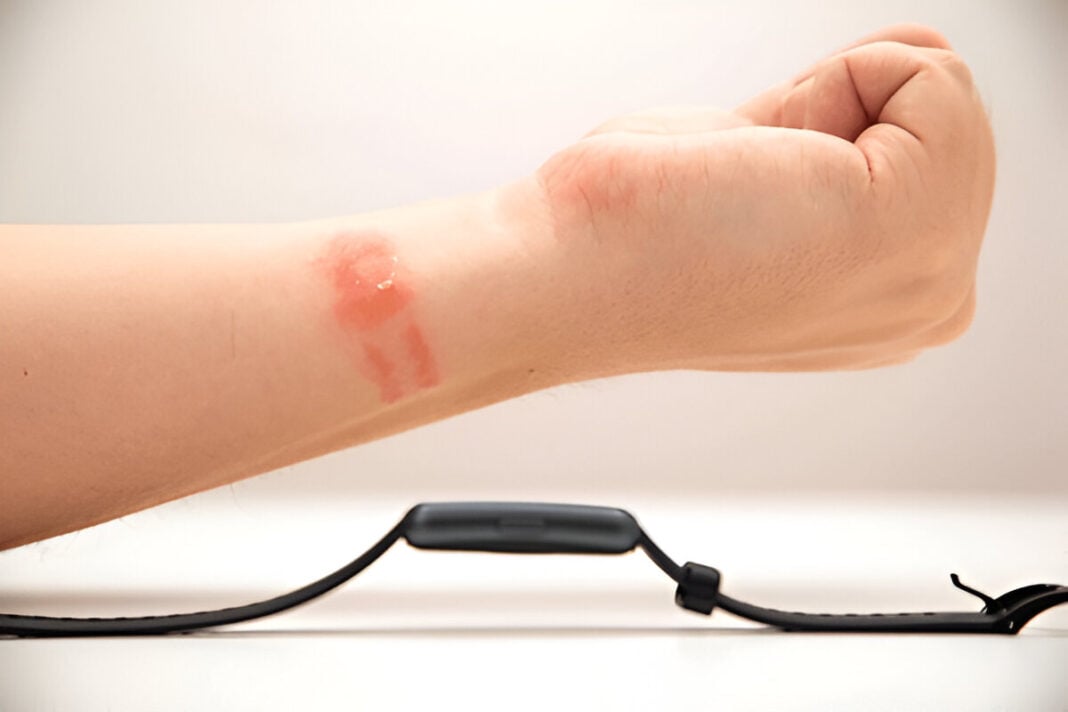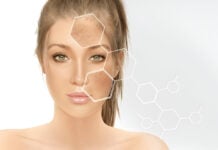In today’s digital world, we’re rarely without our smart devices. From fitness trackers and smartwatches to smartphones and wireless earbuds, our tech gadgets are constantly in contact with our skin. While they bring convenience and connectivity, they can also bring something less welcome dermatitis. Cases of dermatitis from smartwatch and phone use are becoming increasingly common, with allergens like nickel, acrylates, and adhesives triggering rashes in unsuspecting users. Understanding how modern tech can affect skin health is crucial for prevention and effective management.
What Is Tech-Induced Dermatitis?
Tech-induced dermatitis refers to skin irritation or allergic contact dermatitis (ACD) caused by prolonged exposure to materials in personal electronic devices. Unlike irritant dermatitis, which results from friction or moisture, allergic contact dermatitis is a delayed hypersensitivity reaction that occurs after repeated exposure to an allergen (Fonacier, 2015).
Common symptoms include:
- Redness and inflammation
- Itching or burning sensation
- Dry, flaky patches or oozing blisters
- Rash localized to areas in contact with the device (e.g., wrists, cheeks, ears)
Common Culprits in Daily Tech
1. Nickel
One of the most well-known causes of contact allergy, nickel is commonly found in:
- Watch clasps and buckles
- Metal frames of smartphones and tablets
- Charging ports and USB connectors
Nickel sensitivity is widespread, affecting up to 17% of women and 3% of men, according to population studies (Thyssen et al., 2011). Repeated exposure through wearables can trigger chronic eczema, especially on the wrist.
2. Acrylates
Used in touchscreens, adhesives, and protective coatings, acrylates are potent sensitizers. Smartwatch bands, screen protectors, and phone cases can all contain methyl methacrylate and related compounds that cause allergic reactions, especially in those with preexisting sensitivities (Uter et al., 2020).
3. Rubber and Plastic Components
Smartwatch bands and earbud tips made from synthetic rubber (latex), polyurethane, or thermoplastic elastomers may cause irritant dermatitis or allergic reactions in sensitive individuals. The repeated friction and sweat underneath the device exacerbate the problem.
4. Formaldehyde-Releasing Compounds
Some adhesives and textiles used in tech accessories release formaldehyde, a common allergen linked to contact dermatitis. Phone cases, wrist straps, and earbuds with synthetic foam are potential sources (Jacob et al., 2015).
Case Reports and Clinical Observations
Recent reports in dermatology journals have linked smartwatches and fitness bands with wrist dermatitis, particularly among users who wear them continuously, including during workouts and sleep. In one case study, a 28-year-old woman developed recurrent wrist eczema from a smartwatch with a nickel-coated buckle. Patch testing confirmed nickel allergy, and symptoms resolved after switching to a silicone band without metal parts (Patterson & Yiannias, 2020).
In another case, earbud dermatitis was linked to acrylate exposure from plastic components in wireless devices. With tech becoming more wearable, dermatologists are seeing increased cases of localized contact dermatitis in tech-dependent populations.
How to Differentiate Tech Dermatitis from Other Skin Conditions
| Feature | Tech-Induced Dermatitis | Eczema | Psoriasis |
|---|---|---|---|
| Location | Limited to device contact area | Often flexural | Extensor surfaces |
| Onset | After prolonged or repetitive use | Chronic | Chronic with silvery scales |
| Symptoms | Itching, redness, scaling, sometimes blistering | Dry, itchy skin | Thick plaques |
| Trigger | Contact with specific materials | Allergens, irritants | Immune-related |
Patch testing remains the gold standard for confirming the allergen, especially if symptoms persist or recur.
Prevention and Management
1. Switch to Hypoallergenic Materials
- Choose smartwatches with ceramic, plastic, or coated titanium parts
- Use nickel-free watchbands or cover metal parts with fabric protectors
- Opt for silicone or medical-grade rubber bands, and avoid cheap metal accessories
2. Keep Skin Dry and Clean
- Moisture and sweat under devices increase skin penetration of allergens
- Remove wearables before exercise or at night
- Clean the device and your skin regularly with gentle, non-irritating cleansers
3. Use Barrier Creams
- Apply barrier creams or protective emollients before wearing devices
- Products with dimethicone or zinc oxide can help minimize contact
4. Topical Treatments
- Use topical corticosteroids for flare-ups (short-term use)
- Calcineurin inhibitors like tacrolimus are steroid-free options for long-term management
5. Patch Testing
- If dermatitis persists, consult a dermatologist for patch testing
- Identifying the specific allergen allows for targeted avoidance and better device selection
Dermatitis from smartwatch and phone use is a growing dermatologic concern in the digital age. With wearable tech becoming part of our daily routines, the risk of exposure to allergens like nickel, acrylates, and adhesives increases. Being mindful of the materials in your devices, practicing good hygiene, and recognizing early signs of irritation can help prevent more serious skin issues. When in doubt, seek professional help — your skin health is just as important as your step count.
References
- Fonacier, L. S. (2015). Contact dermatitis: a practice parameter-update 2015. Journal of Allergy and Clinical Immunology: In Practice, 3(3), S1–S39. https://doi.org/10.1016/j.jaip.2015.02.003
- Thyssen, J. P., Menné, T., & Johansen, J. D. (2011). Nickel allergy in Denmark–A review of epidemiology, exposure, and regulation. Contact Dermatitis, 64(3), 127–135. https://doi.org/10.1111/j.1600-0536.2010.01881.x
- Jacob, S. E., Zapolanski, T., & Chayavichitsilp, P. (2015). Formaldehyde and formaldehyde-releasers in skin care and household products. Dermatitis, 26(6), 275–281. https://doi.org/10.1097/DER.0000000000000146
- Uter, W., Gefeller, O., & Schnuch, A. (2020). Trends in contact sensitization to acrylates in Germany between 2001 and 2016. Contact Dermatitis, 82(2), 79–88. https://doi.org/10.1111/cod.13424
- Patterson, J. W., & Yiannias, J. A. (2020). Allergic contact dermatitis to wearable fitness devices. Journal of the American Academy of Dermatology, 82(6), 1422–1424. https://doi.org/10.1016/j.jaad.2020.01.052












